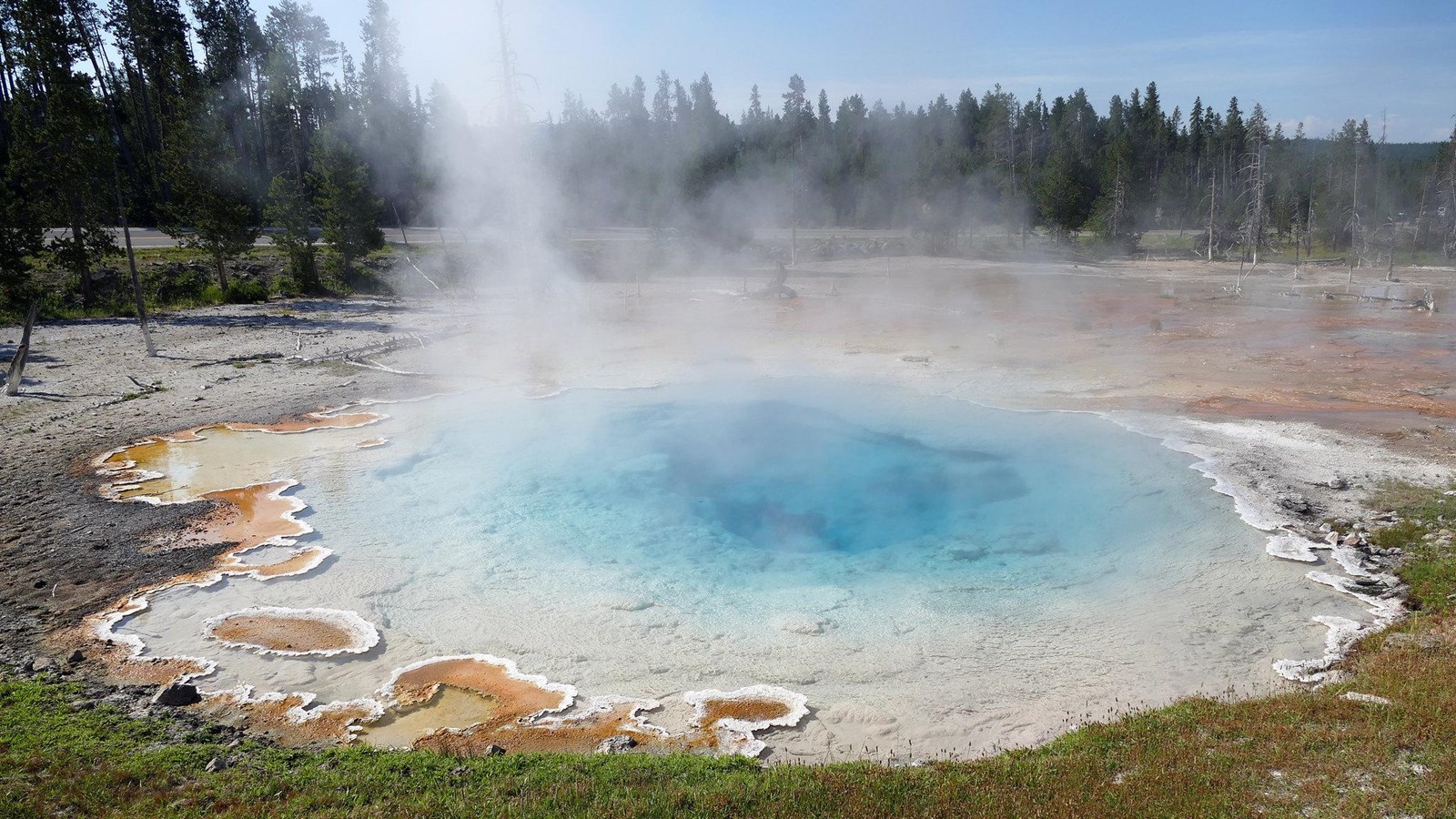Last updated: December 3, 2024
Place
Silex Spring

NPS / Diane Renkin
Silex Spring is named for the large amount of silica found in and around this feature. Silex is Latin for silica. Silica comes from the underlying volcanic rocks, which the hot waters dissolve. This silica is then deposited as sinter, which lines the pool and forms terraces along the runoff channels.
The large runoff channels the boardwalk followed from the parking lot are formed from Silex Spring. Thermophiles thrive in these hot waters, which in turn give the channels such a variety of textures and colors. Silex Spring has an average temperate of 174.7°F (79.3°C), an average pH of 8.4, and an average conductivity of 2000 uS/cm. It last erupted in 2006.
Hot Springs
Hot springs are the most common hydrothermal features in Yellowstone. Their plumbing has no constrictions.
Superheated water cools as it reaches the surface, sinks, and is replaced by hotter water from below.
This circulation prevents water from reaching the temperature needed to set off an eruption.
Fountain Paint Pot Area
Hydrothermal features can be grouped into two general categories: those with a great deal of water (hot springs and geysers) and those with limited water (mudpots and fumaroles). Despite their structural similarities, no two features are exactly alike. All of these features occur in the Fountain Paint Pot area.
Thermus aquaticus, the thermophile that revolutionized DNA replication processes, was discovered in this area.
Lower Geyser Basin
The Lower Geyser Basin sits on unstable glacial gravel on top of solid rock. The jarring energy of an earthquake can make the gravel vibrate and shift position, and compact or fracture.
All these changes affect water supplies to hot springs. They might force muddy water to the surface, clouding existing pools or creating new ones. They might divert water from a pool, causing it to dry up. Water temperatures might also increase or decrease due to these subsurface changes.
In the days after the Hebgen Lake earthquake of 1959, all of these changes were observed in various springs of the Firehole River geyser basins. The epicenter (point of origin) of the quake was determined to be about 31 air miles (50 km) northwest of the Fountain Paint Pots area.
Great Fountain Geyser, on the Firehole Lake Drive, is the only geyser outside of the Old Faithful area with eruption forecasts.
Use Caution in Hydrothermal Areas
- Stay on boardwalks and designated trails.
- Hydrothermal water can severely burn you.
- Never run, push, or shove.
- Supervise children at all times.
- Do not scratch hydrothermal mats.
You are responsible for your safety.
Think safety, act safely. Yellowstone is a dangerous place.
